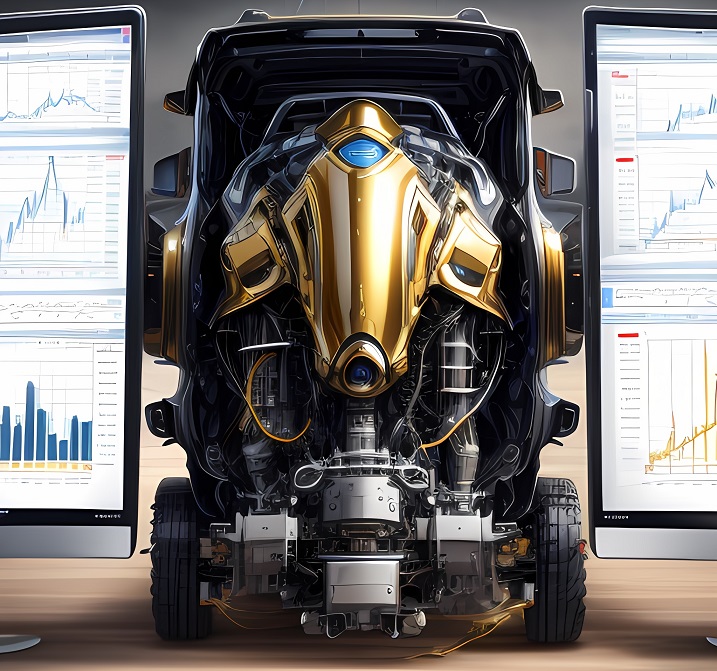What kind of manufacturing produce system is suitable for small and medium-sized manufacturing enterprises?

How can these manufacturing produce system solutions help manage a company's day-to-day business activities such as accounting, finance, procurement, project management, supply chain and manufacturing? manufacturing produce system refers to a fully integrated platform deployed on-premises or in the cloud, primarily for managing all aspects of a manufacturing or distribution business. In addition, manufacturing produce system also supports the comprehensive financial management, human resource management, supply chain management and manufacturing management of the core accounting functions of the enterprise. Manufacturing produce system tracks all aspects of production, logistics and financial processes, providing transparency across the entire business process. These integrated systems serve as the central hub for end-to-end workflow and data across the enterprise, making it accessible to various departments. Manufacturing produce system is designed to support multiple functions of small and medium-sized enterprises, including providing customized functions for your business.
For most enterprises, manufacturing produce system focuses on the unified management of logistics, capital flow and information flow in the process of purchase, sales and production. Usually, enterprises, as a node in the industrial chain, only pay attention to the material and capital transactions of upstream and downstream suppliers and customers directly related to themselves, as well as their own production, processing and assembly flow.
With the development concept of "independent innovation, healthy ecology, harmonious and win-win", LongRiverTech has gradually developed multiple product lines with independent intellectual property rights. LongRiverTech manufacturing produce system has accumulated a lot of knowledge, lean design, although the sparrow is small, it has all the internal organs. It is very suitable for the customization, deployment and implementation of small and medium-sized enterprises, and meets the needs of the industry.
LongRiverTech's multiple independently evolving product lines sometimes intertwine, colliding with different sparks, tailoring and adapting to different application scenarios. According to the characteristics of , LongRiverTech manufacturing produce system integrates the functions of invoicing system, processing and manufacturing system and project management system to meet the needs of .
In the field of workshop operation, customized production and manufacturing management software, production scheduling management software, warehousing and logistics management software, and R&D design management software can be implemented. The resource management software mainly includes 8 major parts: accounting, financial management, production control management, logistics management, procurement management, distribution management, inventory control, and human resource management. And here, everyone needs to pay attention to the in-out warehouse receipt in the inventory control module. In the future, merchant B can find merchant A to collect payment based on the warehouse-in receipt. The outbound order is the order sent by the merchant B himself. The outbound order and the inbound order are matched, which is convenient for future reconciliation and collection, and thus simplifies the transaction procedures between the two merchants who often cooperate. At the same time, it also makes the transactions in the market more fluid, and no longer needs table summarization. The use of OA system process includes: personal signature, process initiation, process authority, process monitoring, process details, process statistics, process entrustment, process handover, completed process, and seal management. The e-commerce management system deploys online enterprises to realize the integration of online and offline enterprises. B2C is the abbreviation of Business-to-Customer, and its Chinese abbreviation is "Business to Customer". "Business-to-customer" is a mode of e-commerce, also known as commercial retail, which sells products and services directly to consumers. This form of e-commerce is generally dominated by online retailing, which mainly uses the Internet to carry out online sales activities. B2C means that enterprises provide consumers with a new type of shopping environment through the Internet - online stores, where consumers shop and pay online through the Internet. B2B refers to the business-to-business marketing relationship, which closely combines the enterprise intranet with customers through the B2B website, and provides customers with better services through the rapid response of the network, thereby promoting the business development of the enterprise (Business Development). Under the new retail layout, through the efficient operation of the manufacturing produce system cloud platform, it fully empowers the industry's new retail operation capabilities and realizes online and offline omni-channel integration. Manufacturing produce system passive service of the cloud platform is self-empowerment, with the latest digital technology, intelligently connects each user, and makes the service go ahead of the user's needs! manufacturing produce system The cloud platform provides enterprises with intelligent integration solutions and services that are truly profitable. The company's sales management requirements are not strict enough, so it is necessary to customize the crm system to meet them. If there are not such strict rigid requirements, you can choose general crm products. What is the rigidity of sales management? Based on historical experience, we have summarized the conditions. We believe that the order from strong to weak should be security, team stability, special requirements and scale. Security requirements, which are strict requirements. If your customer is a confidential organization and all customer information is confidential, then you can only choose to customize CRM. Only customized CRM systems are deployed independently, all data is stored on your own servers, and the system services are only aimed at one enterprise. Team stability requirements, which are also relatively strong rigid requirements. Sometimes enterprises have more internal rules, more accurate time requirements, and complex calculations. In particular, several conditions are intertwined and also require custom crm solutions. Because the interests of the individuals or groups involved are many, it is difficult to achieve fairness by manual means, and a large number of referees are required to intervene, which may threaten internal unity and stability. At this point, you need to customize your crm system to handle it. For example, customer conditions, customer reassignment conditions, customer type assignments, quote discounts and multiple versions. The third condition is a special requirement, perhaps the particularity of the industry, or the company's own requirements. In short, there are some special functions, there is no standard product adaptation, and manual processing is difficult, which requires the intervention of management software.

LongRiverTech's basic data functions include: subjects, employees, products, commodities, accounts, warehouses, inventory in transit, and batches of accounting items. A practical manufacturing produce system must be able to provide multiple perspectives from different dimensions to help customers observe the operation of data and make decisions effectively and efficiently. Through LongRiverTech manufacturing produce system statistical report, you can view business flow, purchase management data, sales management data, inventory management data, processing and manufacturing statistical data, import and export trade and capital management data. Small and medium-sized enterprises focus on production and processing to drive upstream procurement and downstream order management. The conventional manufacturing produce system satisfies the large-scale production management of batch products. Mass-produced products with a high degree of standardization can quickly reach saturation through large-scale expansion, leaving a lot of room for growth in non-standard orders that require individual customization. For more innovative non-standard orders, it is increasingly dependent on the auxiliary management of computer systems to cope with the explosive growth of business data.
With the complexity of enterprise production design and the increase of IT infrastructure, the functions of hardware and software systems have become increasingly powerful, and the existing information systems have to face a large number of new problems. Today, complex data grows exponentially, leaving enterprises with a large number of data processing tasks that are difficult to cope with. Managing these data is not only costly, but also difficult to achieve the desired effect and achieve a better return on investment (ROI). The digital economy is accelerating the drive of industrial transformation. The manufacturing produce system cloud platform helps enterprises keep pace with the pulse of digital transformation, stimulate innovation momentum, and win an intelligent future. The core product drives product research and development based on user needs, and provides rich, high-performance, and stable product and service clusters, which can be subdivided into multiple modules and subsystems, such as: Invoicing system, retail system, membership CRM system, WMS warehousing systems, asset management systems, etc. Docking with existing systems to realize fine and intelligent management of enterprises. The B2B distribution mall is a B2B wholesale business model based on brands and bulk transactions. B2B2C online mall system is a new generation of O2O service designed for new retail. Tailor-made business intelligence BI system for market management and application, increasing user loyalty and optimizing user experienceMES is a kind of monitoring and feedback on resource management plans. MES is actually the refinement of resource management business management at the production site. Resource management is a business management-level system, while MES is a field operation-level system. Therefore, many MES management software will be connected with industrial equipment to collect real-time data through industrial control technology, and then upload it to the resource management system for business status change and business instruction processing. One-stop information solution procurement management runs through the integrated solution of planning, sourcing, execution and inventory management, helping to select, plan and optimize the entire procurement process, and continuously save costs. Manufacturing produce system cloud platform agent platform is an information exchange platform for data exchange between brands and agents. Security engineering management systems include: project monitoring management software system, monitoring security project management software system, intelligent building quality monitoring and control security system, construction project security company management system design, technology research and development project management information system, research and development intelligent project control management system, Research and develop the PM construction project management information system, the owner's project quality control management system.
LongRiverTech manufacturing produce system inventory valuation includes: cost adjustment sheet, inventory sheet, and loss report sheet. LongRiverTech sales management functions include: sales order, sales return order, retail order, retail return order, sales billing, business documents. The easy-to-use manufacturing produce system supports users to conduct comprehensive query, transaction flow query, capital flow query, inventory flow query and processing flow query through business flow. Manufacturing produce system warehouse management functions include: external warehouse single-day claim list, monthly claim plan, summary allocation claim form, pre-shipment note, frozen inventory, approval, and delivery note. Manufacturing produce system import and export trade functions include: foreign exchange exchange bill, logistics transportation bill, customs entry and exit, processing cost bill, batch profit and loss accounting.

Employee self-service: leave, overtime, going out, card signing, business trip, etc. Employees can directly submit electronic forms such as leave application form, overtime work form, outing form, business trip form, and card signing form online through the system for intelligent circulation approval. The performance appraisal functions of the resource management system include: appraisal setting, appraisal task, self-appraisal, appraisal scoring, appraisal summary, appraisal general appraisal, employee confirmation, performance improvement, appraisal query, goal management. Through the PDA order dispatching function, one order corresponds to multiple warehouse specialists to complete the picking. The warehouse specialist operates the interface, scans the shelf and directly packs and packs. The PDA operation interface clearly understands the work progress. When specifying the goods, the goods are immediately known. Precise positioning. Warehouse KPI assessment uses warehouse daily throughput, personnel performance assessment, warehouse daily picking success rate and response time analysis, warehouse daily picking success rate and response time analysis, such as increasing the accuracy rate of PDA inventory by 100% above. It is conceivable that the establishment of the product database (BOM) restricts the implementation of resource management. Everyone says that the implementation of resource management is difficult. We understand that the most difficult thing is the improvement of the product database. Many companies implement resource management slowly or abnormally. It is often stuck on the imperfection of the database. However, as long as the enterprise has a strong implementation team and the implementers have the spirit of perseverance, and overcome the management and data barriers, the road to successful implementation of resource management will be revealed. The system also clearly regulates the import procurement process, inventory management, and domestic sales management of the import department. All the above-mentioned processes are connected with the financial department through the financial and cost control module in the system, so that the financial department is transformed from a statistical and accounting service department into a cost control center—every time a business occurs in each business department, the financial department can In the system, the expenses and profits can be understood through corresponding subject inquiries, which provides a comprehensive and scientific basis for decision-making. Therefore, after process reengineering, the main business content of the financial department has also greatly increased, mainly including: customer management, sales business approval, procurement business approval, variable expense settlement, credit bill management, fund forecasting, general ledger and assessment, etc. The content and the focus of its work have also changed from "borrowing must be equal" to "customer credit control", "financing management", "reasonable payment of fees", and "assessment".
In other words, let manufacturing produce system assist managers to easily control the whole process of work. There is no management without process and details, and the process and details are often beyond the scope of human energy and ability, but manufacturing produce system can easily do it.